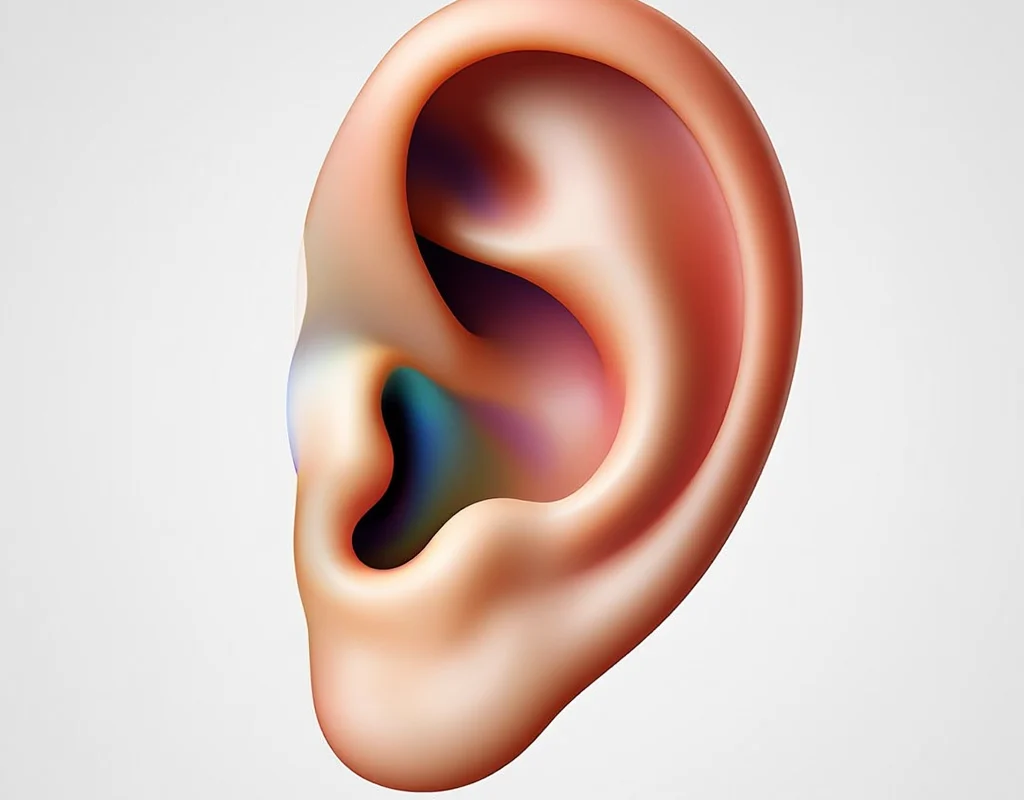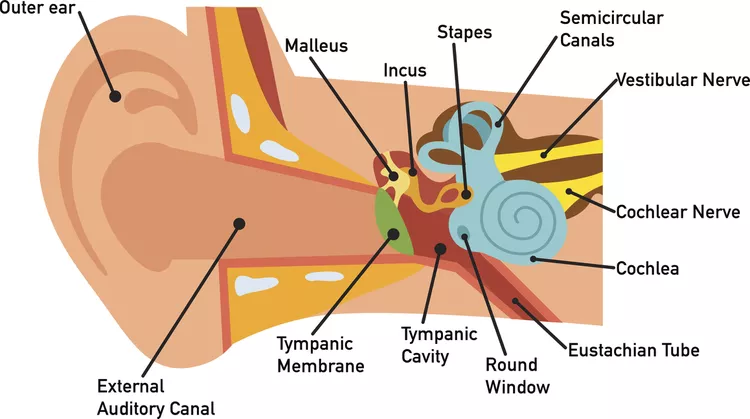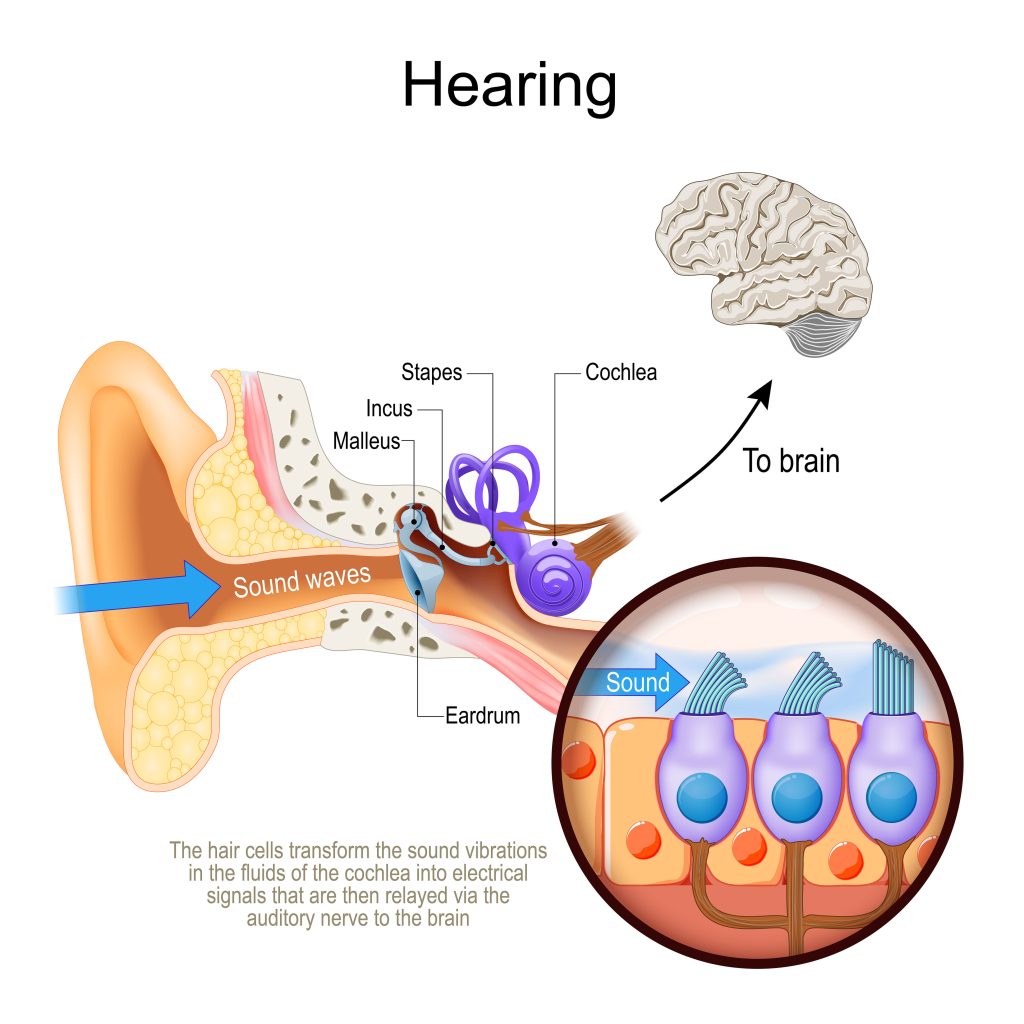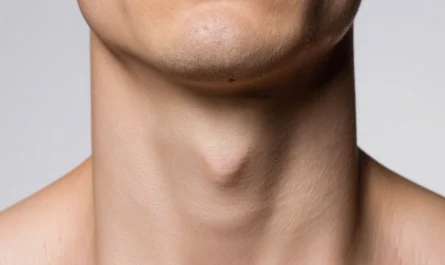Ear anatomy refers to the structure and organization of the human ear, including its parts and how they work together. This intricate system allows us to detect sound and maintain balance. Understanding how the outer, middle, and inner ear function gives insight into how we hear, process vibrations, and stay oriented in space. Each part plays a unique role in transmitting sound waves and supporting equilibrium.
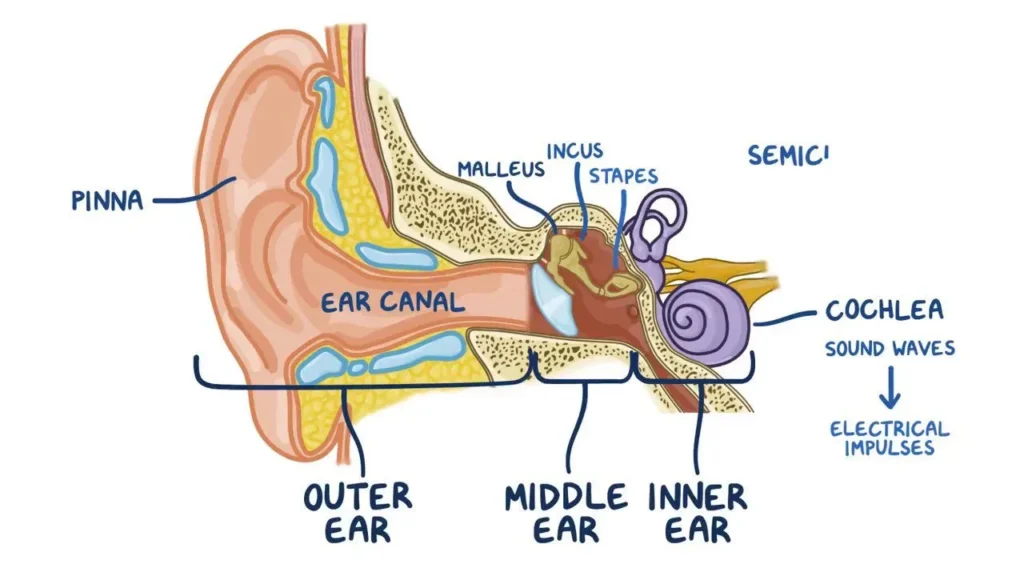
Key Parts of the Human Ear: A Quick Overview
The ear has three main sections: outer, middle, and inner. Each part has specific tasks. The outer ear captures sound waves. The middle ear boosts those waves using small bones. The inner ear turns sound into signals for the brain and manages balance. Together, they form the ear structure that lets us hear and stay upright. This overview sets the stage for diving deeper into each section.
Why the Ear’s Design Matters
The ear’s layout is no accident. Every curve and bone has a purpose. The outer ear funnels sound efficiently. The middle ear acts like a natural amplifier. The inner ear handles complex tasks like converting vibrations and tracking motion. This design ensures we hear clearly and move without falling. Understanding this setup shows how the hearing system works as a team.
Evolution’s Role in Ear Anatomy
Ears have evolved over millions of years. Early vertebrates had simple structures for detecting vibrations. Over time, the ear structure became more complex. Mammals developed the three-part system we have today. This evolution improved hearing and balance, helping survival. Knowing this history makes ear anatomy even more impressive.

The Outer Ear: How Sound Enters
The outer ear is where hearing starts. It includes the pinna, the visible part, and the ear canal. The pinna’s shape catches sound waves like a funnel. These waves travel down the ear canal, a short tube, to the eardrum. This simple process is the first step in the hearing system. The outer ear is built to guide sound effectively.
Pinna: More Than Just Decoration
The pinna isn’t just for looks. Its curves and folds direct sound into the ear canal. Different shapes affect how we locate sounds. For example, animals like bats have huge pinnas for echolocation. In humans, the pinna helps slightly with direction. It’s a small but clever part of ear anatomy.
Ear Canal: The Sound Highway
The ear canal is a narrow path about an inch long. It carries sound to the eardrum. Wax in the canal traps dirt and germs, protecting the ear. The canal’s slight curve also helps shield the eardrum from injury. Here’s what the outer ear does in a nutshell:
- Captures sound with the pinna.
- Channels waves through the ear canal.
- Protects with wax and structure.
- Prepares sound for the middle ear.
This setup ensures sound reaches the next stage cleanly.
The Middle Ear: Function of the Auditory Bones
The middle ear is a small, air-filled space behind the eardrum. It contains three tiny bones: the malleus, incus, and stapes. These bones, called ossicles, amplify sound vibrations. The eardrum vibrates when sound hits it, and the ossicles pass those vibrations to the inner ear. This process boosts sound so we hear better. The middle ear is a key player in the hearing system.
The Eardrum: A Sensitive Membrane
The eardrum is a thin layer that vibrates like a drumhead. Sound waves make it move. These movements are tiny but precise. The eardrum passes vibrations to the ossicles. If damaged, hearing can suffer. Its role in ear anatomy is critical for clear sound.
Ossicles: The Body’s Smallest Bones
The malleus, incus, and stapes are the smallest bones in your body. They form a chain that transfers vibrations. The malleus touches the eardrum, the incus connects to it, and the stapes pushes against the inner ear. This chain amplifies sound up to 20 times. The middle ear’s efficiency makes hearing sharp.
Eustachian Tube: Pressure Control
The Eustachian tube connects the middle ear to the throat. It equalizes air pressure so the eardrum works properly. When you yawn or swallow, it opens briefly. This prevents muffled hearing during altitude changes, like on a plane. The tube’s role supports the ear structure perfectly.
| Part | Function | Importance |
| Eardrum | Vibrates with sound | Starts sound transfer |
| Ossicles | Amplify vibrations | Boosts sound clarity |
| Eustachian Tube | Balances pressure | Keeps eardrum functional |
This table sums up the middle ear’s key components.
The Inner Ear: Cochlea and Balance
The inner ear is the most complex part of ear anatomy. It houses the cochlea for hearing and the vestibular system for balance. The cochlea turns vibrations into electrical signals for the brain. The vestibular system tracks head movement to keep us steady. This section is where sound and balance come together. It’s the final stop in the hearing system.
Cochlea: The Sound Converter
The cochlea is a spiral, snail-shaped structure filled with fluid. Vibrations from the stapes make the fluid move. Tiny hair cells inside the cochlea detect these movements. Each hair cell responds to different sound frequencies. They convert vibrations into nerve signals. This process is central to the hearing system.
Vestibular System: Keeping You Upright
The vestibular system handles balance. It includes three semicircular canals and two small sacs. These structures detect head movements and gravity. Fluid inside the canals shifts when you move. Hair cells sense this and send signals to the brain. The vestibular system ensures you don’t fall while walking or spinning.
Protecting the Inner Ear
The inner ear is delicate. Loud noises can damage cochlea hair cells, causing hearing loss. Infections or injuries can affect the vestibular system, leading to dizziness. Protecting your ears from loud sounds is crucial. This keeps the ear structure working smoothly for years.
How Sound Is Converted into Signals for the Brain
Sound travels a complex path through the ear. It starts as waves, becomes vibrations, and ends as brain signals. The outer ear collects sound. The middle ear amplifies it. The inner ear transforms it into electrical impulses. This process is the heart of ear anatomy. Here’s how it happens step by step.
From Waves to Vibrations
Sound waves hit the eardrum via the outer ear. The eardrum shakes, moving the ossicles in the middle ear. The stapes pushes against the cochlea’s oval window. This creates waves in the cochlea’s fluid. Each step in the hearing system is precise. The process ensures sound is clear.
Hair Cells and Nerve Signals
Inside the cochlea, hair cells detect fluid movement. Different cells handle different pitches. High-pitched sounds activate cells near the cochlea’s base. Low-pitched sounds trigger cells deeper inside. These cells send signals to the auditory nerve. The brain interprets them as sound.
Brain’s Role in Hearing
The auditory nerve carries signals to the brain. The brain processes them as voices, music, or noise. It also uses input from both ears to locate sound sources. This teamwork between ears and brain is key to ear anatomy. The hearing system relies on this final step.
Here’s the process in a list:
- Sound waves enter the outer ear.
- The eardrum vibrates in the middle ear.
- Ossicles amplify the vibrations.
- The cochlea converts vibrations to signals.
- The brain interprets the signals.
This sequence shows how sound becomes something we understand.
Fun Facts About Hearing and Ear Sensitivity
Ears are full of surprises. They do more than just hear. The hearing system is packed with unique traits. The vestibular system keeps you balanced even when you’re not thinking about it. Here are some fun facts about ear anatomy. They show how amazing our ears are.
Ears Never Stop Working
Your ears are always on. Even when you sleep, they detect sounds. The brain filters out unimportant noises during rest. This constant work by the hearing system is automatic. It’s like having a 24/7 security system for sound.
Ear Sensitivity Varies
Human ears hear frequencies from 20 Hz to 20,000 Hz. Kids hear higher pitches than adults. As we age, cochlea hair cells wear out, reducing high-frequency hearing. Animals like dogs hear even higher pitches. This shows the ear structure’s range and limits.
Balance and Hearing Share Space
The vestibular system and cochlea are neighbors in the inner ear. Both use similar hair cell technology. This dual role makes the inner ear a multitasker. Damage to one can affect the other. It’s a reminder of how connected ear anatomy is.
The human ear is a masterpiece of biology. Its ear structure—outer, middle, and inner—works together seamlessly. The outer ear grabs sound, the middle ear amplifies it, and the inner ear processes it for hearing and balance. The cochlea and vestibular system handle complex tasks with tiny parts. Understanding ear anatomy shows why protecting our ears matters. From catching sound to keeping us steady, the hearing system is a remarkable design worth appreciating.
